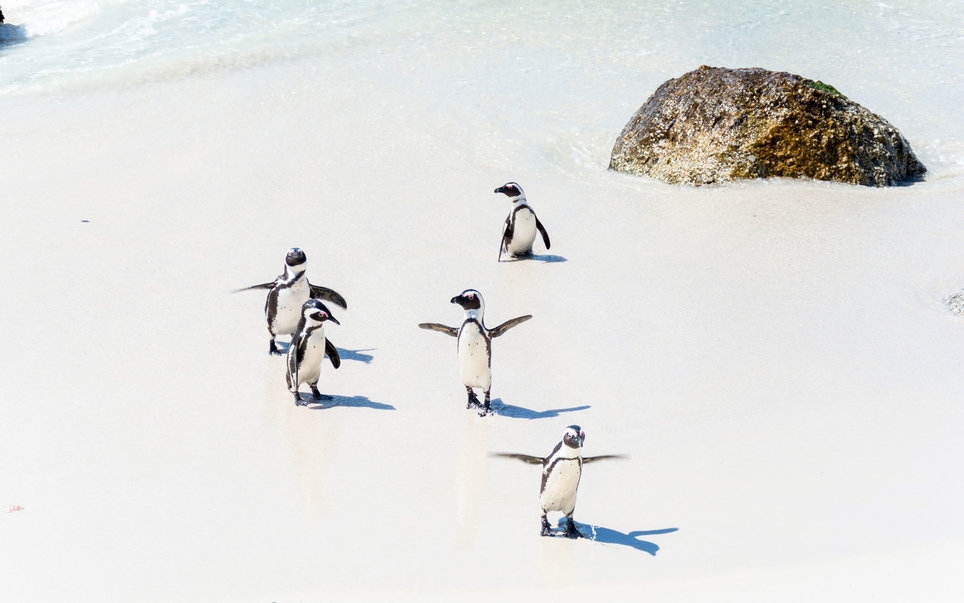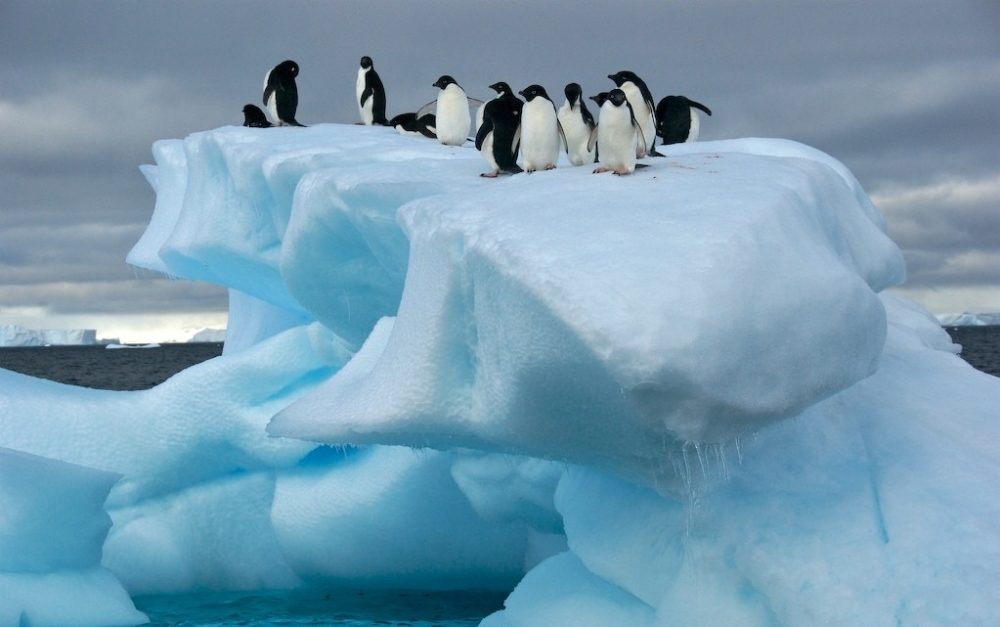Polar bears, like penguins, live in places with a cold, even harsh climate. In the illustrations, these animals are often depicted living peacefully among snows and ice floes. But polar bears are predators, and penguins are an easy and tasty prey for them. Why don't polar bears eat penguins? Is it so? You will find the answer to this question in this article.
Material Content:
Where do penguins and polar bears live?
Penguins and polar bears are inhabitants of land, however, these animals prefer to hunt in water.
Penguin settlements are observed in the cool seas of the Southern Hemisphere, in the waters of the Arctic and on the islands adjacent to the South Pole. You can see these unusual birds:
- in the north of New Zealand;
- in southern Australia and Africa;
- in the coastal zone of South America, including the Falkland Islands and Peru.
The northern border of their habitat falls on the Galapagos Islands, washed by the flows of cold currents.
Penguins can't fly. On land they move extremely awkwardly, but they are wonderful swimmers and divers. Their features:
- speeds up to 27 km / h;
- under water, at a depth of 3 m, spend about an hour and a half a day;
- in search of food, they dive from 300 to 900 times a day to a depth of 530 m and emerge by jumping out of the water to a height of up to 1.8 m.
 Spring and autumn are more in the water, migrating hundreds of kilometers in search of food. In winter they prefer land. Animals unite in numerous colonies, closely pressed against each other to maintain heat and protect from piercing winds.
Spring and autumn are more in the water, migrating hundreds of kilometers in search of food. In winter they prefer land. Animals unite in numerous colonies, closely pressed against each other to maintain heat and protect from piercing winds.
Polar or polar bears are one of the largest mammals on the planet. The weight of adult males is from 500 to 800 kg, which is second only to the body weight of an elephant, giraffe and fur seal.
The white predator lives in the Northern Hemisphere:
- the northern border of their habitat is at 88 ° north latitude;
- the southern border captures Newfoundland and the arctic desert zone to the tundra.
The world's largest population of polar bears lives on the Arctic coast of the Chukchi Sea, owned by the Russian Federation (Chukotka Autonomous Okrug). In winter, in these places the mercury column drops to -60 ° C, and in summer it rises, at best, to 0 or + 3 ° C. A thick double fur coat that does not get wet in water and a thick (up to 10 cm) layer of subcutaneous adipose tissue reliably protects animals from cold and winds.
Polar bears prefer to be in close proximity to perennial drifting ice floes, therefore they are forced to make seasonal migrations:
- in the summer, during the melting of the ice, they leave closer to the North Pole;
- with the onset of winter, they move south to the ice-covered coastal zones.
Animals dive and swim beautifully, deftly, like oars, wielding their front paws and using their hind limbs as a rudder. Without stopping to rest, they are able to make long (record 685 km) races, developing a speed of up to 6.5 km / h.
Features of the nutrition of predators
The diet of polar bears is determined by the season:
- In winter, white predators prey on seals, eating 1 individual once a week, ringed seals, sea hares. Attacks on small walruses and baleen whales are known.
- In summer, they wander for a long time on the surface, overcoming hundreds of kilometers and eating plants. With a good combination of circumstances, they catch polar foxes, small rodents, waterfowl (as well as eat their eggs), fish. With a lack of food, carrion, dead fish, seaweed are selected.
With a shortage of food, polar predators can starve for 3-4 months, existing due to fat deposits.
 Polar bears have a well-developed hearing, smell and vision, thanks to which they feel the victim at a distance of about a kilometer. And the white color of the coat helps mask. Stealthily approaching, the animal behaves like an intelligent hunter:
Polar bears have a well-developed hearing, smell and vision, thanks to which they feel the victim at a distance of about a kilometer. And the white color of the coat helps mask. Stealthily approaching, the animal behaves like an intelligent hunter:
- sneaking up on the victim from behind cover;
- guards for a long time, freezing in a certain position;
- overturns ice floes and suppresses prey with a powerful paw strike.
For their ingenuity and resourcefulness shown during hunting, polar bears are popularly called Umka.
Having taken possession of the prey, the predator first of all eats the skin and lard of the prey. If this is not enough for him to be completely saturated, then everything else. An adult animal needs about 7 kg of food for one meal, hungry - much more, 20-25 kg.
The simple answer is why polar bears do not eat penguins
Penguins are hunted by sea lions, seals, killer whales and sharks. Eggs and chicks steal brown skuas from seagulls. But the polar bear never eats penguins. Why?
The answer to this question is simple, just remember where these animals live in the wild:
- penguins live in the Southern Hemisphere, in Antarctica;
- polar bears - in the Northern Hemisphere, in the polar regions of the Arctic.
 Penguins and polar bears are not destined to meet, between them hundreds of thousands of kilometers.
Penguins and polar bears are not destined to meet, between them hundreds of thousands of kilometers.
It can be assumed that, being nearby, the polar bear would not have refused such prey as a penguin. And who knows what all this would turn out for both.












